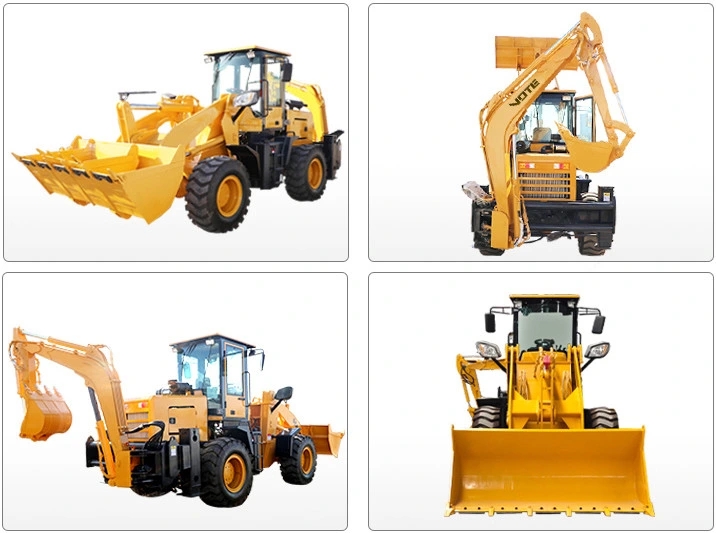The differences between a 1-ton loader and a 2-ton loader are mainly reflected in aspects such as loading capacity, applicable scenarios, structural design, and cost. The specific analysis is as follows:

I. Comparison of Core Parameters
| Parameter | 1-ton Loader | 2-ton Loader |
|---|---|---|
| Rated Loading Capacity | ≤1 ton (it is recommended that the actual load be ≤0.8 ton) | ≤2 tons (it is recommended that the actual load be ≤1.6 tons) |
| Bucket Capacity | Usually 0.6 - 0.8 m³ (suitable for lightweight materials) | 0.8 - 1.2 m³ (capable of handling larger volumes of materials) |
| Applicable Scenarios | Light-duty operations such as in small warehouses, farms, and logistics sorting | Medium and high-intensity operations such as on construction sites, sand and gravel yards, and port loading and unloading |
| Maneuverability | Small turning radius (about 3.5 meters), suitable for narrow spaces | Slightly larger turning radius (about 4 meters), stronger stability |
II. Selection Suggestions
- Selection Based on Loading Requirements
- Choose a 1-ton loader: It is applicable to lightweight scenarios such as handling cartons, small equipment, and bulk materials (such as grains, feeds), and when it is necessary to frequently shuttle through low spaces or aisles.
- Choose a 2-ton loader: If you need to shovel and load medium and high-intensity materials such as sand, gravel, coal, and small building materials, or interface with high-position shelves (≥3 meters), it is recommended to choose a 2-ton model.
- Matching with Operating Environment
- Indoors/narrow sites: Give priority to a 1-ton loader. It has a small size, flexible operation, and exerts less pressure on floor bearing capacity.
- Outdoors/complex terrains: A 2-ton loader is more suitable due to its larger dead weight and more wear-resistant tires (such as solid tires), making it more suitable for uneven roads or ramp operations.
- Cost and Maintenance Considerations
- The power consumption cost of a 1-ton loader is lower (about 15 - 25 yuan per day), but it needs to be charged more frequently.
- A 2-ton loader has a stronger endurance (it can work for 6 - 8 hours when fully charged) and is suitable for long-time operations.
- Purchase Cost: The price of a 1-ton loader is about 150,000 - 250,000 yuan, and that of a 2-ton model is about 250,000 - 400,000 yuan.
- Operating Cost:
- Maintenance Frequency: A 1-ton loader has a simple structure and lower maintenance cost; a 2-ton loader, due to its large load, requires more attention to components such as the drive axle and braking system.
- Supplementary for Special Scenarios
- Cold chain/pharmaceutical industry: Both can be selected, but it is necessary to match a low-temperature battery (-30°C - 50°C) and anti-vibration design.
- High safety requirements: A 2-ton loader can be equipped with intelligent systems (such as ramp anti-slip, fingerprint unlocking), offering better safety.
III. Summary
- 1-ton Loader: Suitable for scenarios with light loads, high frequency, and limited space, with outstanding cost performance.
- 2-ton Loader: Suitable for medium and high-intensity, complex environments, and long-time operations, with a higher long-term investment return.





